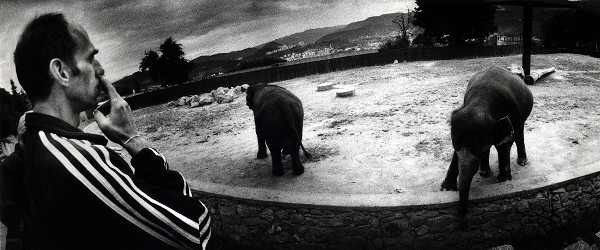
|
Rip Hopkins Strange Days © Rip Hopkins, 2000 October 1999 Usti suddenly found itself put abruptly upon the map when the town's local authorities built a three metre high concrete wall around the roma ghetto so as to protect the "honest people" from the "antisocial" ones. According to the town's mayor, the aim was not to separate the two populations but to bring together the "Whites" living in their pavilions on one side of Maticni street and to unite the sixty odd roma families living in the two high rise buildings on the other The Maticni street wall has since been dismantled and sold to the local zoo. Both roma and non-roma communities no longer want to hear anything about it, but the animosity between the two remains and if anything has increased. The Non-Roma strongly resent the international media coverage surrounding the whole issue, considering it to be unjust and impartial, the Roma are marginalised and feel that discrimination against them has increased. The "Wall of Shame" is not as clear cut as it first may seem, the wall was not the solution it was the last straw in an on going battle, fought between both communities since 1995 Strange Days visually portrays the misunderstanding and confusion of identity between each community. The Non-Roma (in black and white photographs) who generally subscribe to the "system", a structured pre-determined daily routine, working within industry or commerce where rules, reglementation and authority constitute the framework that enables Czech society to exist and function. The Usti Roma (in colour photographs) on the other hand tend to maintain a high disregard for authority, considering it to restrict their liberty and to suppress their culture and identity. Back Next |